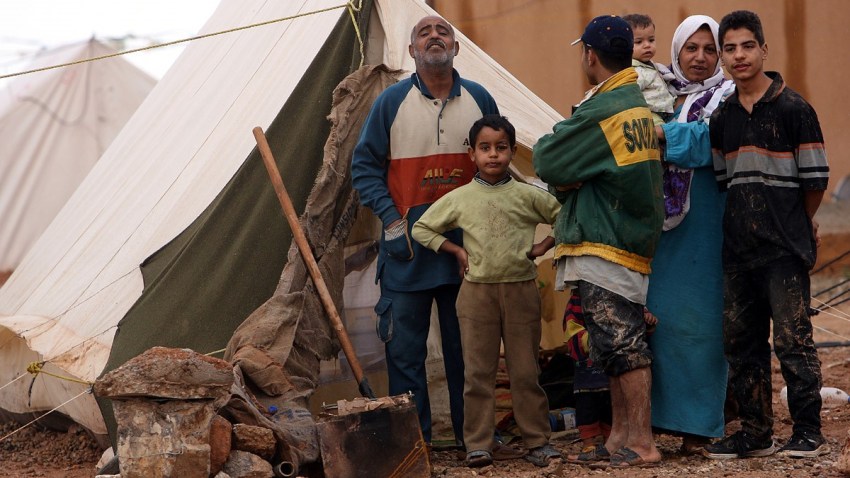Last week, following the capture of Mosul by the Islamic State of Iraq and Syria (ISIS), the United Nations
raised the crisis in Iraq to a level three humanitarian disaster—its highest designation—with over 1.5 million displaced people. In an email interview,
David Romano, associate professor of political science at Missouri State University, discussed the refugee situation in Iraq.
WPR: What impact have refugees and internally displaced persons (IDPs) had in Iraq and globally since 2003?
David Romano: The impact of refugees and IDPs on Iraq and globally is very multifaceted and depends on the context. After the 2003 invasion of Iraq and removal of Saddam Hussein's regime, many pre-2003 Iraqi refugees and IDPs looked forward to returning home, while at the same time new groups of refugees and IDPs were created by these events.
Shiite, Kurdish and political refugees in general returned to Iraq after 2003. Many had high expectations for their return, only to face disappointments as conditions in Iraq failed to improve, and even worsened in some cases. Dissident political elites returning to Iraq, especially from Iran—in the case of most of the Iraqi Shiite political movements—and the United Kingdom—in the case of many Sunni and non-sectarian movements—quickly found themselves in sometimes bitter political conflict with Iraqis who had remained and suffered under Saddam’s Baathist dictatorship. The American-led Coalition Provisional Authority lost more legitimacy when it was seen to be empowering newly returned and often disconnected Iraqis, such as Ahmad Chalabi, with key positions in the first post-Saddam government.
In terms of IDPs, Saddam's regime during the 1990s, in a series of “Arabization” campaigns, displaced hundreds of thousands of Shiites from the southern marshes as well as Kurds, Turkmen and Christians from northern areas around Kirkuk, Mosul and other oil-rich territories. Returnees to these areas expected compensation and restitution, but only a small fraction that owned, rather than rented, property in their places of origin saw any form of recompense.
The issue of return and restitution in these northern areas also became politically charged given a dispute between the central government of Nouri al-Maliki in Baghdad and the Kurdistan Regional Government (KRG) over the administration of territories such as Kirkuk. Baghdad accused the KRG of settling any Kurd, regardless of whether they were genuine IDPs or refugees, in these "disputed territories" in order to solidify their claims to the area. The KRG, meanwhile, accused authorities in Baghdad of not doing anything to return Arab settlers from Saddam's Arabization programs to southern Iraq or to provide compensation to people in the disputed territories. Refugee and IDP populations thus became tools in a political contest between Baghdad and the KRG.
New refugee and IDP populations emerged after 2003 as well. These were mainly Iraqi Sunnis and Christians, but also some Kurds and Shiites, fleeing violence in the Sunni Triangle, northwest of Baghdad, and in the capital. The Kurdistan Autonomous Region took in many IDPs and became a refuge, especially for Iraqi Christians who were targeted in other parts of the country. Neighboring Syria and Jordan also took in huge numbers of Iraqi refugees, straining their already limited budgets and resources. Because of the Arab Spring uprisings, some of these refugees began returning from Syria in 2011, only to once again find themselves caught between ISIS and the central government after June 2014. Once again, the Kurdistan region has begun taking in large numbers of IDPs from Mosul and other areas.
WPR: To what degree has Iraq's refugee situation from 2003-2008 stabilized, in terms of how many refugees have returned home and how many have permanently resettled abroad?
Romano: The situation had stabilized to a large extent by 2008, with no large movements occurring after that, except for Iraqi refugees returning from Syria to escape the fighting there. The current ISIS-led conflict with Baghdad has led to a renewed surge of forced displacement, however.
WPR: What are the domestic implications of Iraq's current IDP flows, including for the Kurdistan region?
Romano: The apparently sectarian conflict increasingly taking hold of Iraq may create more homogenous regions in the Sunni and Shiite-majority areas of the country, facilitating regionalism or even the breakup of Iraq. In Kurdistan, however, the influx of large numbers of non-Kurds, mostly Sunni Arabs and Christians, is creating a more diverse Kurdistan region. This does not necessarily pose a political as opposed to financial problem, except for in the disputed territories, where the Kurds seek to solidify Kurdish majorities to strengthen their claims on these territories. Non-Kurdish IDPs in these areas may therefore come under pressure from Kurdish authorities to relocate or return to their places of origin.

